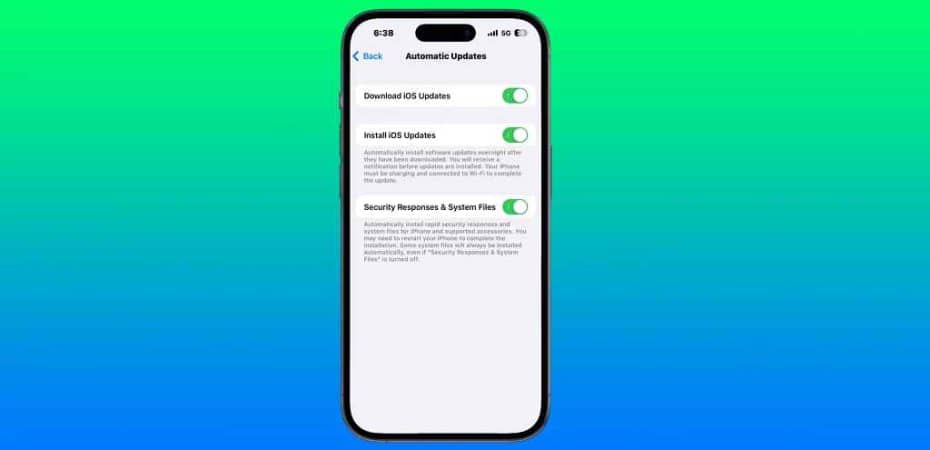In today’s digital age, the importance of cybersecurity cannot be overstated. With cyber threats evolving at an alarming rate, it’s crucial for individuals and organizations to have a rapid security response plan in place. But what exactly is rapid security response, and how can you download it? In this comprehensive guide, we will delve into the intricacies of rapid security response, providing you with valuable insights and practical steps to ensure your online safety.
Rapid security response is a proactive approach to dealing with cybersecurity threats and incidents promptly. It involves a combination of strategies, processes, and technologies aimed at detecting, analyzing, and mitigating security breaches in real-time. This approach ensures that potential threats are identified and addressed swiftly, reducing the risk of data breaches, financial losses, and reputational damage.
Why Rapid Security Response Matters

In an era where cyberattacks can occur at any moment, the ability to respond swiftly to security incidents is crucial. Delayed responses can result in significant damage, including data loss, financial repercussions, and damage to an organization’s reputation. Rapid security response helps minimize these risks by allowing organizations to neutralize threats before they escalate.
Key Components of Rapid Security Response
Threat Detection
The first step in rapid security response is detecting potential threats. This involves deploying advanced monitoring tools and systems that can identify unusual activities or vulnerabilities in your network.
Incident Analysis
Once a threat is detected, it’s essential to analyze the incident thoroughly. This includes determining the nature and scope of the breach, as well as identifying the potential impact on your organization.
Incident Containment
After analysis, the next step is containment. This involves isolating the affected systems or networks to prevent further damage while the incident is investigated.
Recovery and Remediation
Once the threat is contained, the focus shifts to recovery and remediation. This phase involves restoring affected systems, removing vulnerabilities, and implementing preventive measures to avoid future incidents.
How to Implement Rapid Security Response

Building an Incident Response Team
One of the key elements of rapid security response is having a dedicated incident response team. This team should consist of individuals with expertise in cybersecurity, incident management, and communication.
Establishing Communication Protocols
Effective communication is essential during a security incident. Establish clear communication protocols to ensure that all team members and stakeholders are informed promptly and accurately.
Selecting Security Tools
Choosing the right security tools is crucial for rapid security response. Invest in advanced threat detection and incident management solutions that can help automate and streamline the response process.
Downloading Rapid Security Response
Now that we understand the importance of rapid security response, let’s explore how to download and implement it.
Step 1: Visit a Trusted Source
To download rapid security response tools, visit reputable cybersecurity websites or official vendor websites. Avoid downloading from unverified sources to minimize the risk of downloading malicious software.
Step 2: Verify Compatibility
Before downloading, ensure that the security tools are compatible with your existing systems and infrastructure. Incompatible software can lead to operational disruptions.
Step 3: Download and Install
Follow the provided instructions to download and install the rapid security response tools. Be sure to keep the software updated regularly to benefit from the latest threat intelligence.
Best Practices for Maintaining Rapid Security Response
To maintain an effective rapid security response, consider the following best practices:
Regular Training and Drills
Train your incident response team regularly and conduct drills to ensure they are well-prepared to handle security incidents efficiently.
Continuous Improvement
Periodically review and update your rapid security response plan to incorporate lessons learned from previous incidents and adapt to evolving threats.
FAQs
1. What is the difference between rapid security response and traditional cybersecurity?
Rapid security response focuses on real-time detection and immediate action against security threats, while traditional cybersecurity often involves preventive measures. Rapid security response is about reacting swiftly to incidents as they occur.
2. Are there free rapid security response tools available for download?
Yes, some cybersecurity vendors offer free versions of their rapid security response tools. However, for comprehensive protection, it’s often advisable to invest in premium solutions.
3. How often should an organization conduct security drills?
Security drills should be conducted regularly, at least annually, to ensure that the incident response team is well-prepared and that the response plan is effective.
4. Can individuals benefit from rapid security response, or is it primarily for businesses?
Rapid security response is valuable for both individuals and businesses. Individuals can use security tools to protect their personal information and devices from cyber threats.
5. Is rapid security response a one-time implementation, or does it require ongoing maintenance?
Rapid security response requires ongoing maintenance and improvement. Cyber threats evolve, so it’s essential to keep your security tools and response plan up to date to stay protected.
Conclusion
In conclusion, rapid security response is a vital component of modern cybersecurity. By promptly detecting, analyzing, and mitigating security threats, organizations can protect their data, finances, and reputation. To download rapid security response tools, visit trusted sources, verify compatibility, and follow installation instructions. By following best practices and continually improving your security response plan, you can stay ahead of cyber threats and safeguard your digital assets.
Read also:
- Blink vs Ring: Choosing the Best Home Security System
- Microsoft Flags Growing Cybersecurity Concerns for Major Sporting Events
- Data Security is a Real Aspect of Your Business
- WordPress Security Guide
- Essential Security Tips For Android
- How to Reopen Closed Tabs
- Where Might I at any point Do A Dolphin Swim In Jamaica?
- Attaining Certified Ethical Hacker Certification: Skills in Ethical Digital Exploration
- Fix Printer Encryption Credentials Have Expired on Mac



